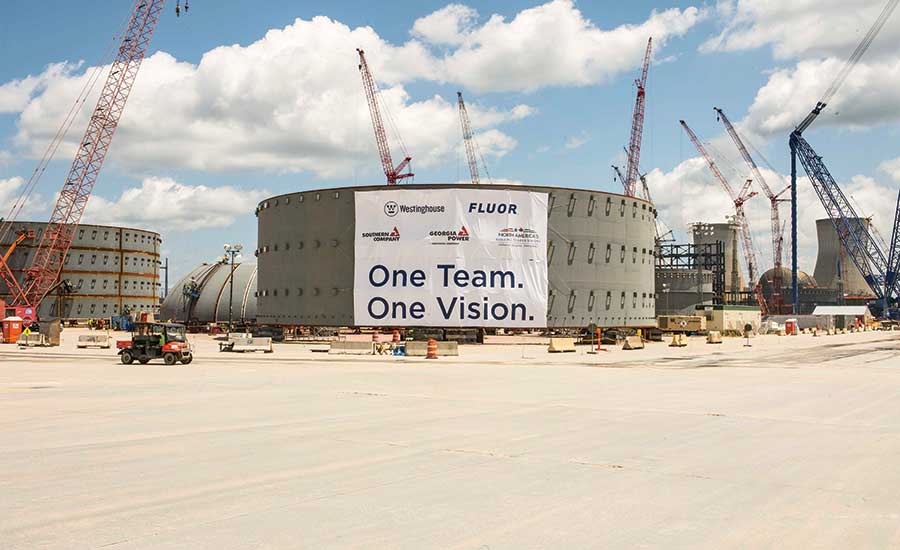Officially commemorating the 130th day under a new contracting team that is leading the $16-billion Plant Vogtle nuclear expansion project, top leaders with Georgia Power and its contractors on May 3 used the milestone to assure craft workers of their commitment to future construction gains.
Paul Bowers, Georgia Power chairman, president and CEO, told workers that turning around the beleaguered project is key to the utility’s future nuclear construction plans. Noting that Georgia Power, which owns 45.7% of the project, is considering building more nuclear units in western Georgia, he said, “It won’t materialize unless we get it right here.”
Already more than three years behind its original schedule and significantly over the initial budget, Vogtle’s current timeline calls for in-service dates of June 2019 and June 2020, respectively, for Units 3 and 4. In January, Westinghouse took over as lead contractor after purchasing the nuclear business of CB&I, the former Vogtle contractor. Westinghouse subsequently hired Fluor as its general contractor.
While acknowledging that the “stakes are high” at Vogtle, Fluor COO Peter Oosterveer cited the contractor’s “well-proven capabilities to deliver complex megaprojects” and made a promise to workers, saying, “We are committed to successful delivery of Vogtle Units 3 and 4, as per the schedule.”
Key to that goal will be bringing on an additional 1,000 craftworkers by the end of 2016, a task that will fall largely to the North America’s Building Trades Unions (NABTU). President Sean McGarvey reiterated his group’s commitment to Vogtle, which he says is NABTU’s most important project.
“There’s no better advertisement for the building trades … than for us to successfully complete this project,” McGarvey told workers, adding, “The building trades will do what’s required to get this job built safely, on time … and on budget.”
McGarvey acknowledged to ENR that, in addition to the number of workers required, there are other hurdles to delivering on the labor requirements, such as the project’s remote rural site, near Waynesboro, Ga.
“It’s a difficult place. It’s not exactly in the middle of a metropolis,” McGarvey says, citing issues such as housing. “It’s a big challenge,” he adds. “But we’re confident we can do it, and we’re going to work diligently at it.”
Earlier this year, Georgia Power and Westinghouse agreed to terms on a legal settlement governing the project. The agreement increases liquidated-damage amounts, which now will be calculated relative to the scheduled nuclear-fuel load dates for Units 3 and 4, which are Dec. 31, 2018, and Dec. 31, 2019, respectively.





